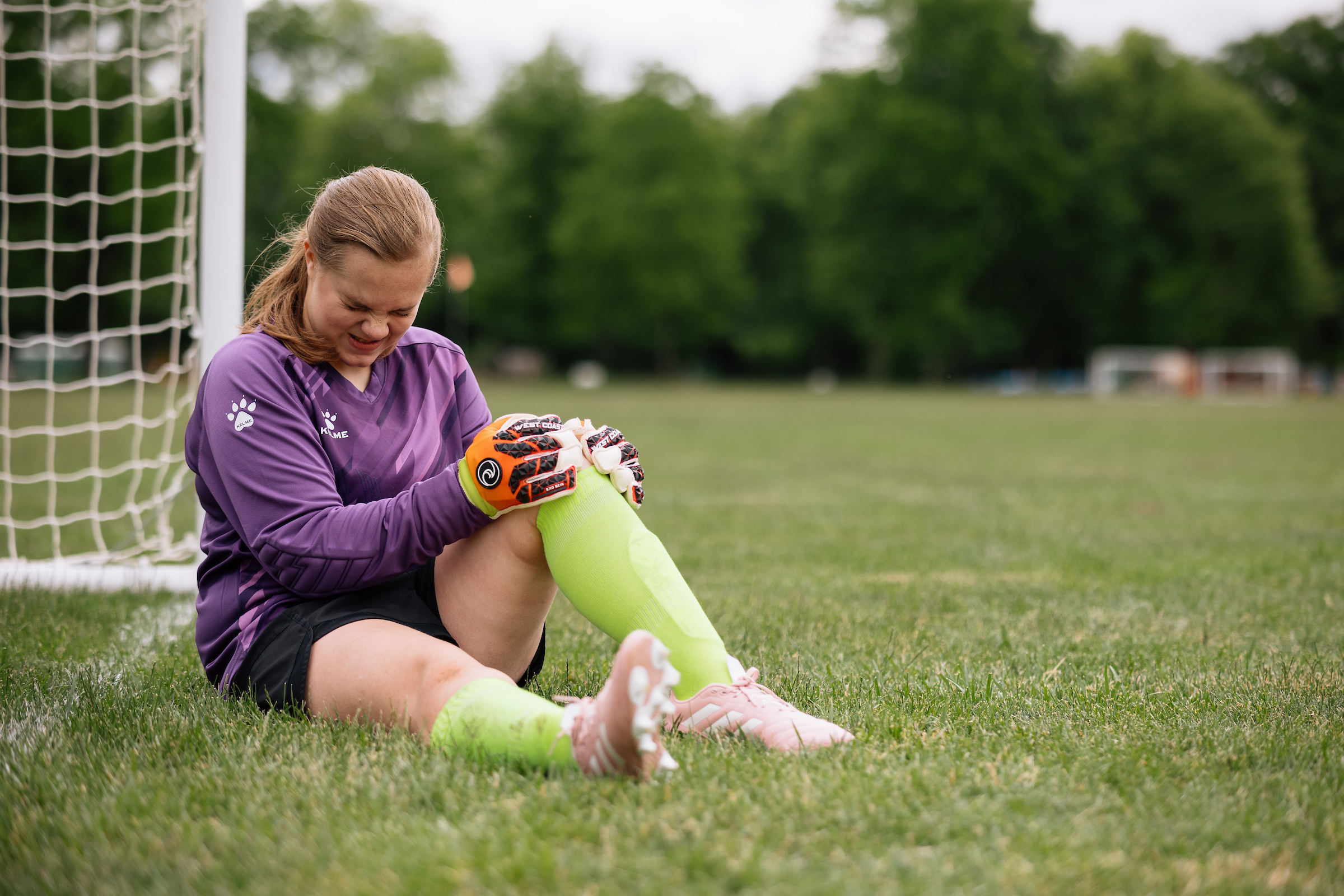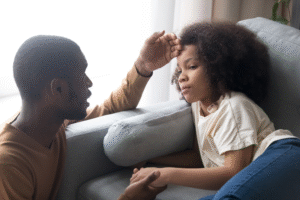knee injuries
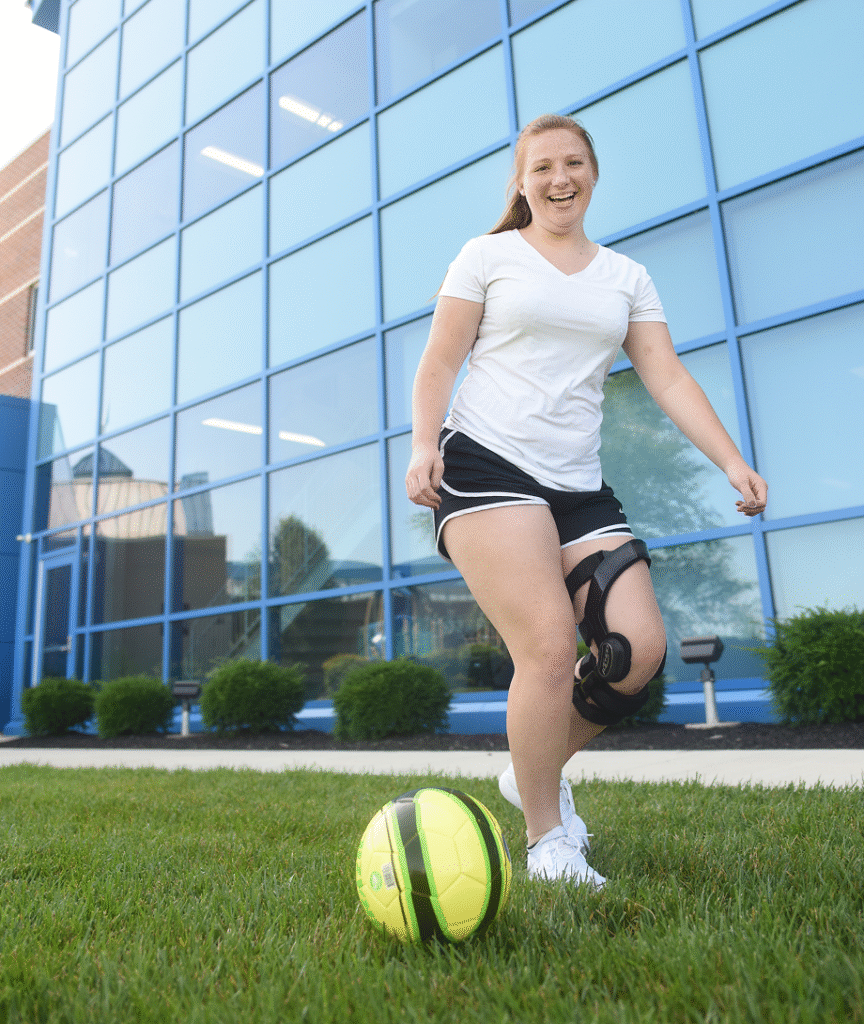
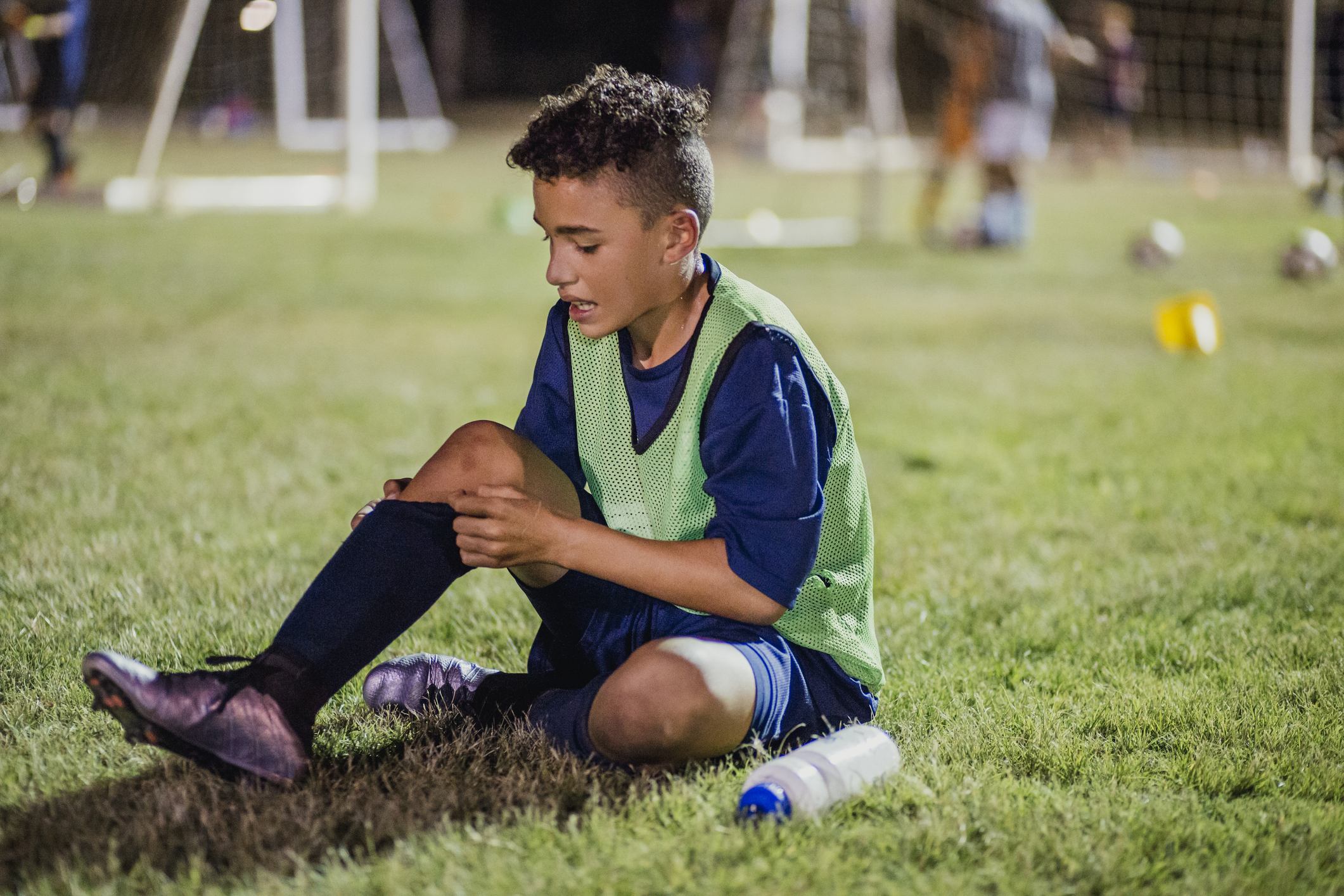
about knee injuries
Knee pain in children and teens can result from minor bumps or more complex injuries. Toddlers may struggle with overuse or inflammation, while active older kids may develop joint issues from sports. Our pediatric orthopedic specialists treat everything from sprains to dislocations and help families navigate each step of care and recovery.
symptoms
If your child is limping or avoiding movement, watch for these common signs of a knee problem:
- Limping or favoring one leg
- Swelling or warmth at the joint
- Clicking, popping or locking sensation
- Difficulty bending or straightening the knee
- Pain at night or after activity
- Knee feels unstable or “gives out”
diagnosis
Diagnosing children’s knee pain starts with a physical exam, movement tests and review of your child’s symptoms. Pediatric specialists assess flexibility, swelling and joint stability. Imaging such as X-rays or MRIs may be used to check for bone or cartilage issues.
Knee injury diagnosis may include:
- Physical exam and symptom review
- Movement and balance assessment
- X-rays or MRI (as needed)
- Evaluation for overuse or growth-related issues
- Swelling, instability or range of motion checks
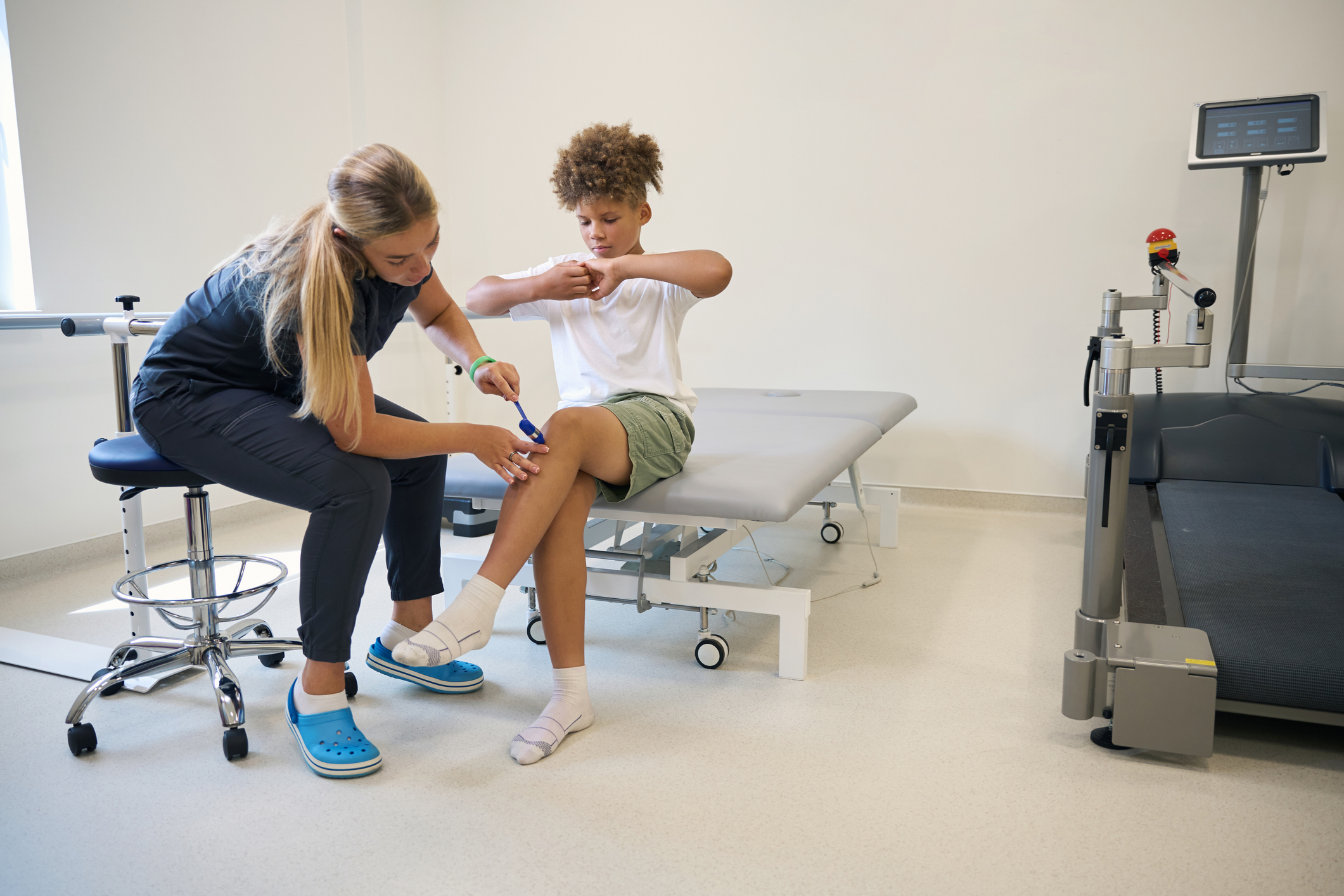
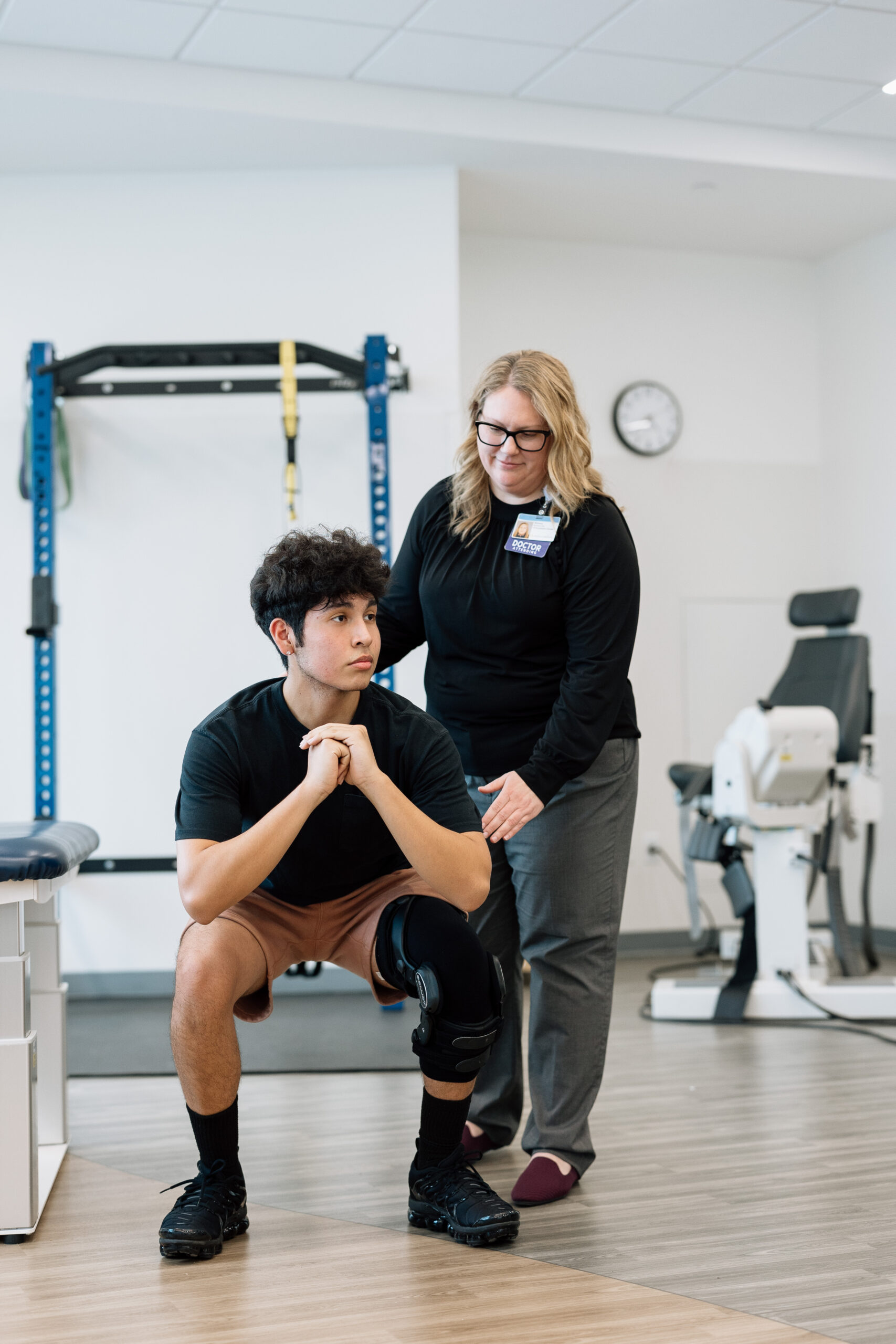
treatment for children’s knee pain
Many kids heal with rest, physical therapy or bracing. More serious injuries, like ligament tears, may require surgery. At Dayton Children’s, our team tailors care to your child’s activity level and long-term joint health. We walk families through every step to support recovery and prevent reinjury.
knee injuries care team
- Pediatric orthopedic surgeons
- Sports medicine doctors
- Physical therapists
- Imaging and diagnostics specialists
knee injuries FAQs
Answers to common questions about knee injuries, including types of knee injuries, care after the procedure and healing timelines.
We always begin with the most conservative approach. Many cases of knee pain can be managed with rest, ice, compression, elevation (RICE), over-the-counter pain relievers and activity modification. Physical therapy can also help strengthen muscles and improve movement, especially after injuries or in cases of overuse.
If bracing is needed to stabilize the joint, we’ll explain how and when to use it. And in rare cases where minimally invasive surgery is the best option (like with severe ligament tears or cartilage damage), we’ll walk you through every step, answer your questions and make sure your child feels supported at every stage.
While many minor aches resolve on their own, it’s time to see a pediatric specialist if your child’s knee pain:
- Lasts more than a few days
- Causes limping or makes it hard to walk or play
- Comes with swelling, redness or warmth around the joint
- Wakes them up at night
- Follows a known injury (like a twist or fall)
Knee swelling in children can have several causes, including:
- A minor injury like a sprain or strain
- A more serious injury involving ligaments or cartilage
- An infection within the joint (which needs prompt care)
- Inflammatory conditions, such as juvenile arthritis
Recovery depends on your child’s age, the type of injury and how soon it’s treated. Some kids bounce back within a couple of weeks with rest and rehab. Others (especially those with ligament or cartilage damage) may need several months of physical therapy, activity restrictions or post-surgical care.
Growing pains are a normal part of childhood development and are commonly confused with knee pain or injury. These usually:
- Occur in both legs
- Happens at night or after a long day of activity
- Don’t involve swelling, limping or visible changes
- Don’t interfere with daily activities
our orthopedic providers
Our pediatric orthopedic team specializes in children’s knee injuries. We help kids heal and get back to being active with care designed just for growing bodies.

related blogs
caring for your child during a surge in respiratory illnesses
read moreget knee injury treatment
If your child has signs of a knee injury, our pediatric orthopedic specialists are here to help. To schedule an appointment with our pediatric orthopedic team, schedule online or call 937-641-4000.
